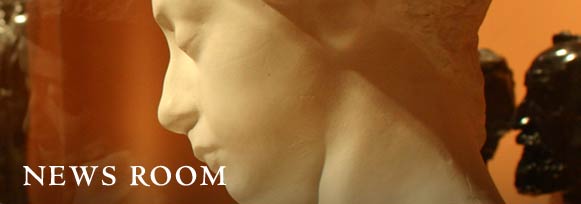Works of Influential Symbolist Art Movement Complement Edvard Munch Exhibition
The Perfume of Sadness: Symbolist Art from the Kirk Long Collection
April 12–July 22, 2006
Stanford, California—The Cantor Arts Center at Stanford University presents The Perfume of Sadness: Symbolist Art from the Kirk Long Collection April 12–July 22, 2006. This exhibition of 30 prints, drawings, and sculpture by 15 artists offers an introduction to Symbolism, a short-lived but influential literary and pictorial movement that flourished throughout Europe during the last decades of the 19th century. Major Symbolist artists represented in the exhibition include Jean Delville, Ferdinand Khnopff, Max Klinger, and Odilon Redon.
"Symbolist images—both verbal and pictorial—are often beautiful, poignant, and mysterious, because their ‘meaning’ or meanings are purposefully indirect, multifaceted, and intentionally evocative," explained Cantor Arts Center Chief Curator Bernard Barryte, who selected works for the exhibition from the collection of Kirk Long. “Narratives, as in Max Klinger's extraordinary Glove cycle, are often suggested, though the progression and denouement of the story is vague and ambiguous. ‘Uncanny,’ ‘disturbing,’ and ‘dreamlike’ are words often applied to these images."
Symbolist pictures, poems, and prose are complex and pungent, their dense allusions, opulent language, and sensuous imagery representing parallel means to similar intellectual and emotional ends. "The music of words, new color harmonies, synaesthesia, the fusion of media, and the mixing of metaphors—as in the exhibition's title, which is taken from a poem by Stephan Mallarmé—were all exploited in an effort to enrich sensation, stimulate the imagination, and suggest essential truths," said Barryte.
This exhibition is made possible by the Lynn Krywick Gibbons Gallery Exhibition Fund.
The Perfume of Sadness complements an exhibition of works by famous turn-of-the-century Symbolist artist Edvard Munch. Desire, Anxiety, and Loss: The Prints of Edvard Munch is on view March 22–June 25, 2006 in an adjacent gallery at the Center.



